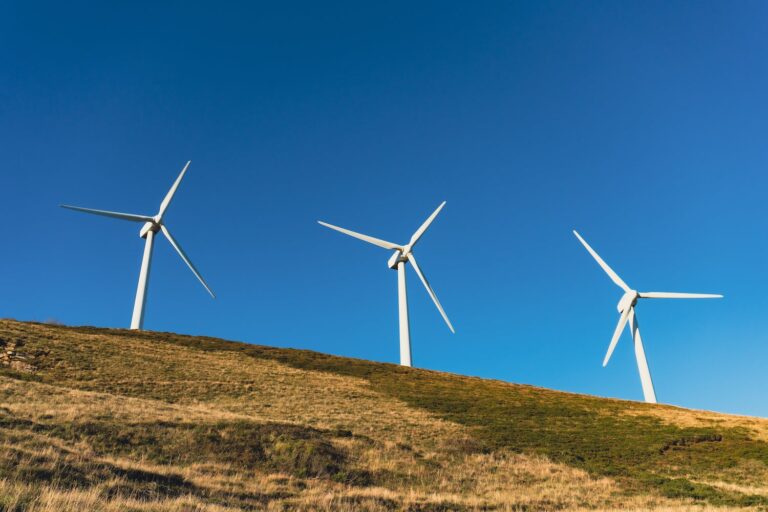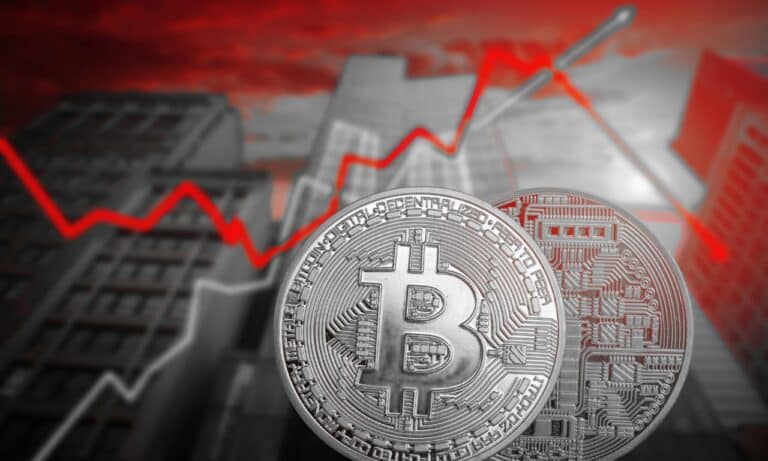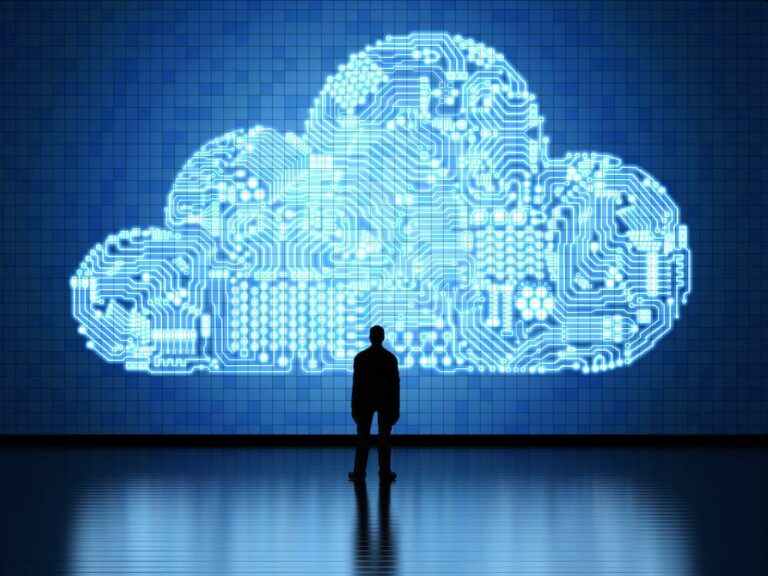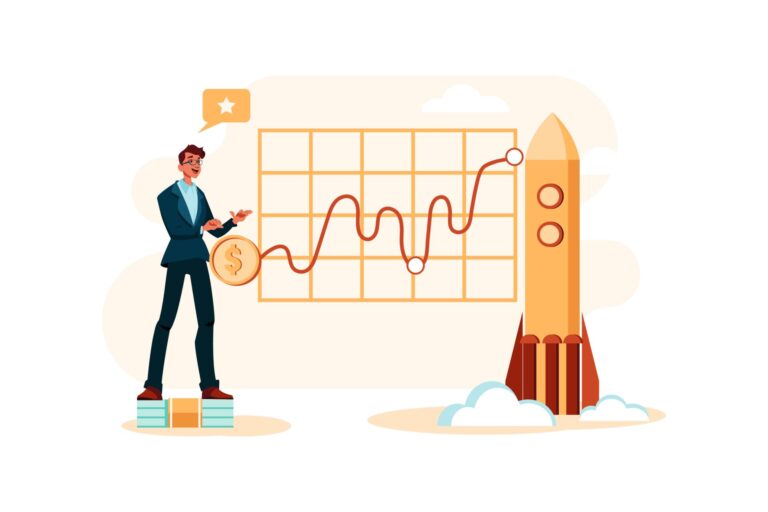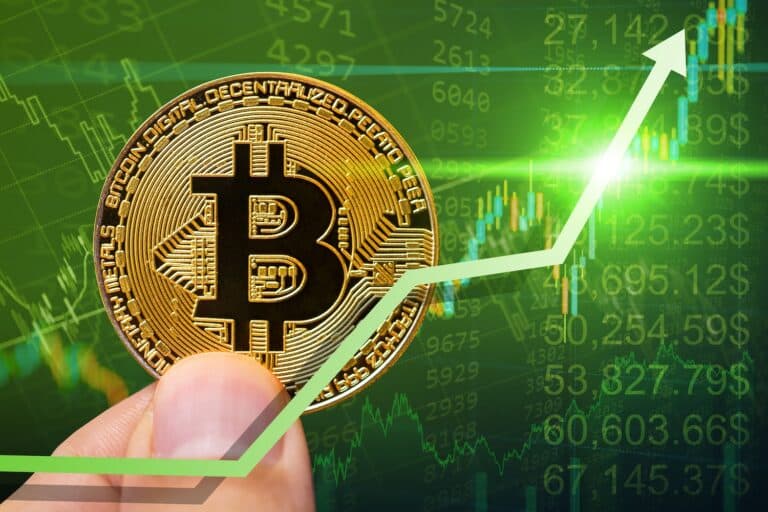Introduction
Welcome to the World of Decentralized Power Grids
Imagine a world where communities and individuals have more control over their energy sources, and the power grid is transformed into a smarter, more efficient, and sustainable system. This is the world of decentralized power grids, where traditional, centralized energy systems are disrupted, and power generation is distributed across diverse sources.
By harnessing the power of blockchain technology and renewable energy, decentralized power grids promise to revolutionize the way we produce, distribute, and consume energy, paving the way for a cleaner and more sustainable future.
Blockchain and Renewable Energy: A Perfect Match
The combination of blockchain technology and renewable energy sources is a match made in heaven, as they complement each other in various ways that lead to a more sustainable and efficient energy ecosystem. Here’s why:
See also our consulting service
- Decentralization: Both blockchain and renewable energy promote decentralization, empowering individuals and communities to take control of their energy production and consumption.
- Transparency: Blockchain’s transparent nature allows for accurate tracking and reporting of energy generation, consumption, and transactions, ensuring trust and reliability in the system.
- Security: The cryptographic security features of blockchain ensure the integrity and authenticity of energy data, reducing the likelihood of fraud and manipulation.
- Automation: Smart contracts on the blockchain can automate energy transactions and settlements, streamlining processes and reducing administrative costs.
- Peer-to-peer trading: Blockchain enables peer-to-peer energy trading, allowing consumers to buy and sell excess energy directly, promoting more efficient use of resources.
- Incentives: Blockchain-based token systems can incentivize the adoption of renewable energy sources and reward users for their sustainable practices.
- Interoperability: The open and interoperable nature of blockchain allows for easy integration with various renewable energy technologies and systems, creating a cohesive energy ecosystem.
- Scalability: As more renewable energy sources are added to the grid, blockchain’s distributed ledger technology can efficiently manage the increasing data and transactions, ensuring the system remains scalable and resilient.
Understanding Decentralized Energy Grids
Defining Decentralized Energy Networks
Decentralized energy networks, also known as distributed energy systems, are a modern approach to energy management that shifts away from the traditional centralized model. In decentralized networks, energy is generated, stored, and distributed closer to the point of consumption, utilizing a variety of small-scale, localized energy sources.
Distributed Energy Resources (DERs): The Backbone of Decentralized Grids
Picture a small, vibrant community nestled in a lush, green valley. The sun shines brightly overhead as solar panels glisten on rooftops, capturing the sun’s energy and converting it into electricity to power homes and businesses. Just a short distance away, an array of wind turbines spin gracefully, harnessing the breeze to generate even more clean energy. This community is a shining example of how distributed energy resources (DERs) form the backbone of decentralized energy networks.
DERs are small, localized energy sources that generate, store, or manage energy close to where it’s consumed. They can be renewable, like solar panels or wind turbines, or non-renewable, like natural gas-fired generators or energy storage systems. By integrating these diverse resources, decentralized energy networks can provide a stable and efficient power supply, even when demand fluctuates or certain resources are temporarily unavailable.
The versatility of DERs is what makes them so powerful in decentralized grids. Here’s a closer look at some common types of DERs:
- Solar power systems: Photovoltaic panels or solar thermal systems that convert sunlight into electricity or heat.
- Wind turbines: Devices that capture wind energy and transform it into electrical power.
- Combined heat and power (CHP) systems: Technologies that generate both electricity and useful thermal energy from a single fuel source, improving overall efficiency.
- Energy storage devices: Solutions like batteries, thermal storage, or pumped hydro storage that store energy when supply exceeds demand, then release it when needed.
- Demand response programs: Initiatives that encourage consumers to adjust their energy consumption patterns to help balance grid load and maintain stability.
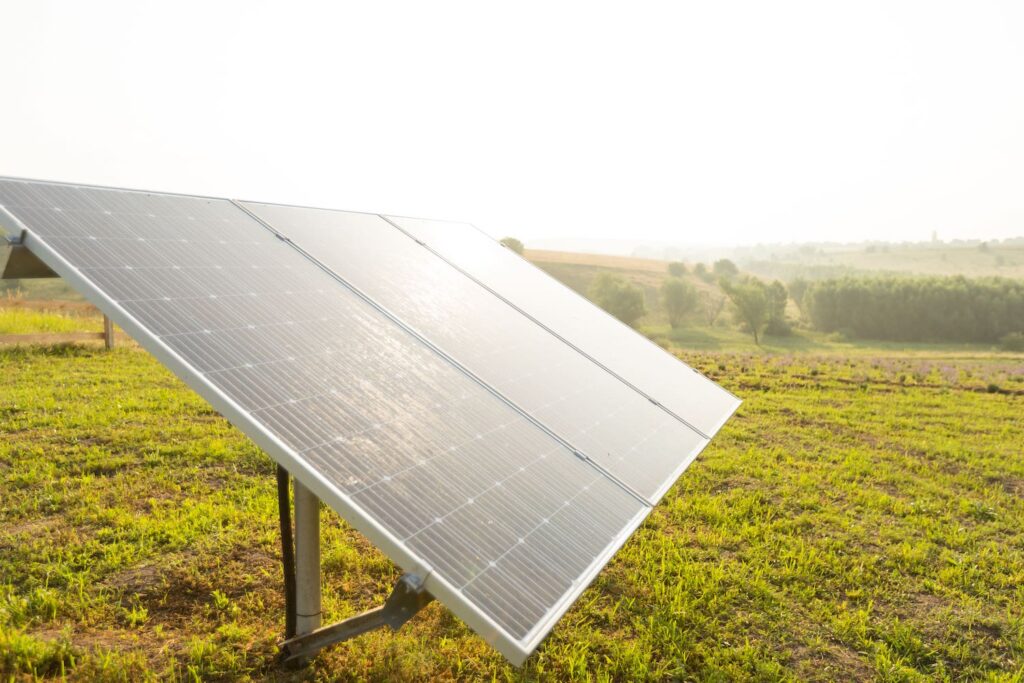
How Blockchain Technology Enhances Decentralized Energy Systems
Blockchain technology is a perfect partner for decentralized energy systems, enhancing their efficiency, transparency, and security in several ways:
- Transparent record-keeping: Blockchain’s distributed ledger provides a secure and transparent record of energy transactions, fostering trust among participants and ensuring accurate accounting of energy generation and consumption.
- Smart contracts: These self-executing agreements on the blockchain automate energy transactions and settlements, streamlining processes and reducing administrative costs. This enables seamless energy trading between consumers and producers, even on a small scale.
- Decentralized governance: Blockchain supports the creation of decentralized autonomous organizations (DAOs) that can govern energy networks without central authorities. This empowers communities to manage their energy systems more democratically and efficiently.
- Incentive mechanisms: Blockchain-based tokens can incentivize the adoption of renewable energy sources and reward users for their sustainable practices. These tokens can be traded or used to access energy services, creating a dynamic and responsive energy market.
- Security and privacy: The cryptographic protection of blockchain ensures the integrity and confidentiality of data, protecting the privacy of users and safeguarding the system from fraud or manipulation.
By integrating blockchain technology into decentralized energy systems, we can unlock the full potential of these networks, creating a future where energy is cleaner, more accessible, and managed more efficiently for the benefit of all.
Se Digital Assets Mining for 100% renewable mining.
Blockchain’s Role in Decentralized Power Grids
Smart Contracts: Automating Energy Transactions
Smart contracts are digital agreements executed automatically when specific conditions are met. They play a crucial role in automating energy transactions within decentralized energy systems, making them more efficient and secure.
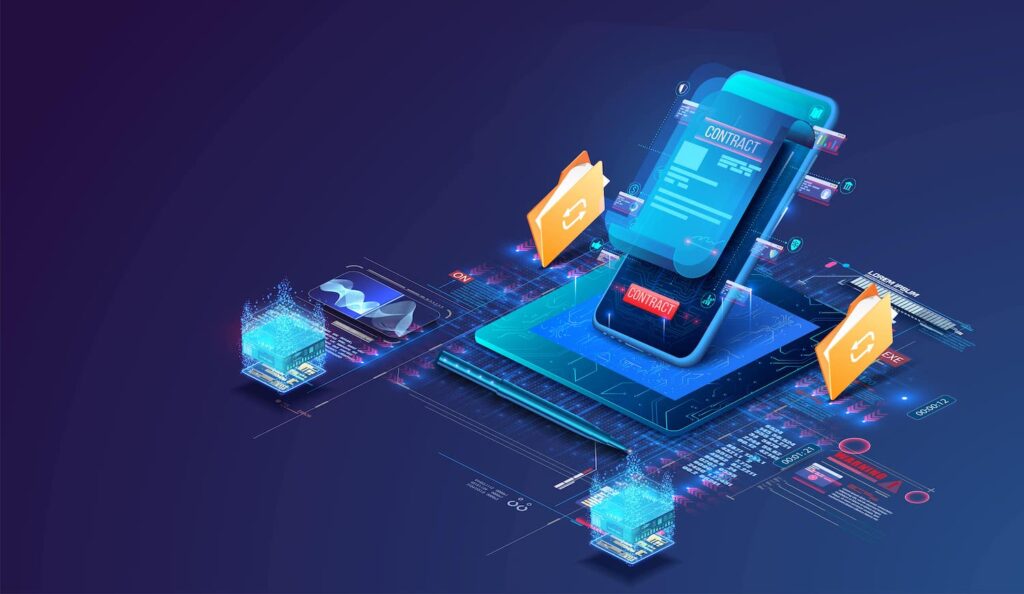
Automated Energy Payments
Imagine Jane, who lives in a solar-powered home. Her family’s solar panels generate more electricity than they need, so they decide to sell the excess energy to their neighbours. With a smart contract in place, the energy transactions are automated.
For example, the smart contract could be programmed to transfer payment from a neighbour’s digital wallet to Jane’s family’s digital wallet whenever they consume electricity from Jane’s solar panels. The transaction is completed automatically, without any manual intervention or delay, ensuring a seamless and transparent energy trading process.
Rewarding Green Behavior
Let’s say Jane’s workplace implements a program to encourage students to use renewable energy and reduce their carbon footprint. They create a smart contract that rewards students with digital tokens for every kilowatt-hour of clean energy they use or generate.
When Jane charges her electric scooter using the workplace solar panels, the smart contract automatically detects this activity and rewards her with the appropriate amount of digital tokens. She can then use these tokens to access special benefits or discounts within the school community, further promoting sustainable practices among students.
These simple examples demonstrate how smart contracts can automate energy transactions in decentralized energy systems, making them more efficient, secure, and user-friendly for everyone involved.
Decentralized Autonomous Organizations (DAOs): Governing Energy Networks
Decentralized Autonomous Organizations (DAOs) play a crucial role in governing energy networks, allowing for democratic decision-making and efficient resource allocation. By operating through blockchain-based smart contracts, DAOs ensure transparency and trust among participants, ultimately leading to a more sustainable and equitable energy future in decentralized energy systems.
Renewable Energy Sources for Decentralized Grids
Solar Power: Harnessing the Sun’s Energy
Solar power systems, such as photovoltaic (PV) panels and solar thermal collectors, capture sunlight and convert it into electricity or heat, respectively. PV panels, which are typically installed on rooftops or ground-mounted arrays, use semiconductor materials to convert sunlight directly into electricity.
On the other hand, solar thermal collectors absorb sunlight to heat a fluid, which can then be used for space heating or hot water production. As the cost of solar technology continues to decrease, its adoption in decentralized energy networks will likely rise, driving a more sustainable and eco-friendly future for generations to come.
Wind Power: Capturing the Power of Air
Wind power relies on wind turbines, large structures with rotating blades that convert the kinetic energy of moving air into electrical power. These turbines can be installed individually or grouped together in wind farms, dotting the landscape like modern-day windmills. As the wind blows, the turbine blades spin, turning a generator that produces electricity.
This clean energy can then be distributed to homes, businesses, and other buildings within the decentralized network. Wind power is a versatile and eco-friendly energy source, making it an ideal companion to solar power in our quest for a more sustainable and greener energy future.
Biogas: Converting Waste into Energy
Biogas is produced through a process called anaerobic digestion, where microorganisms break down organic materials, such as agricultural and animal waste, food scraps, and sewage sludge, in the absence of oxygen.
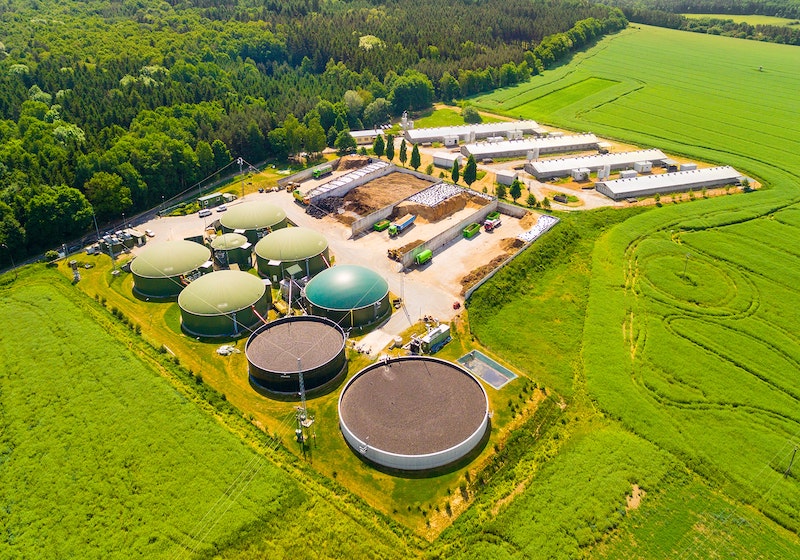
This process generates a mixture of methane and carbon dioxide, which can be captured, purified, and used as a fuel for heating, electricity generation, or even transportation. By converting waste into energy, biogas not only helps to diversify the energy mix in decentralized networks but also addresses waste management challenges and reduces greenhouse gas emissions from decomposing organic materials.
In this way, biogas turns what was once considered a problem into a valuable resource, showcasing the potential of innovative renewable energy solutions in creating a more sustainable and efficient decentralized energy system.
Hydropower: Utilizing the Force of Water
Hydropower plants convert the kinetic energy of flowing or falling water into electricity by using turbines and generators. The water’s motion turns the turbine, which then powers the generator to produce electricity. This process doesn’t produce harmful emissions, making hydropower an eco-friendly energy option. By harnessing the force of water, hydropower adds to the diverse mix of renewable resources in decentralized energy systems, contributing to a cleaner and more sustainable future.
Benefits of Blockchain and Renewable Energy in Decentralized Grids
Increased Efficiency and Reduced Energy Loss
By generating and distributing energy closer to where it’s consumed, decentralized systems reduce energy loss during transmission, resulting in increased efficiency and cost savings for both producers and consumers.
Blockchain technology further enhances this efficiency by automating energy transactions, eliminating the need for intermediaries, and streamlining administrative processes. The transparent nature of blockchain also helps optimize energy distribution, ensuring that electricity and heat are delivered exactly where and when they’re needed.
Together, blockchain and renewable energy sources pave the way for a more efficient and resilient decentralized energy network, where resources are utilized to their fullest potential, ultimately benefiting the environment and the economy.
Greater Consumer Control and Flexibility
Envision a future where you, as a consumer, have more control over your energy choices and can adapt your usage based on your needs and preferences. Blockchain and renewable energy in decentralized grids make this possible by giving consumers greater control and flexibility over their energy consumption and production.
In decentralized energy systems, individuals and communities can generate their own power using renewable sources, like solar panels or wind turbines, and even sell excess energy back to the grid. This empowers consumers to become active participants in the energy market, rather than just passive recipients.
Blockchain technology further enhances this consumer control by enabling peer-to-peer energy trading, allowing users to buy and sell energy directly with one another. With transparent pricing and automated transactions, consumers can make more informed decisions about their energy usage and take advantage of dynamic pricing models to optimize their costs.
Challenges and Barriers to Adoption
High Implementation Costs
While the benefits of blockchain and renewable energy in decentralized grids are undeniable, there are still some challenges and barriers to overcome before widespread adoption can occur. One of the primary hurdles is the high implementation costs associated with setting up decentralized energy networks and integrating blockchain technology.
For instance, installing renewable energy systems, such as solar panels or wind turbines, can require significant upfront investment. Additionally, integrating blockchain technology into existing energy infrastructure and developing new applications, like smart contracts and decentralized platforms, can also be costly endeavors.
Regulatory and Legal Hurdles
Technological Limitations and Scalability
Blockchain technology also faces its own scalability challenges, as the increasing number of transactions and data within the energy network can put a strain on the system, potentially causing slower transaction times and higher costs.
To conquer these challenges and bring the dream of a sustainable, decentralized energy oasis to life, ongoing technological advancements and innovative solutions are essential.
Security and Privacy Concerns
Existing energy regulations and policies often favor traditional, centralized energy systems and may not fully accommodate the innovative features of decentralized networks. In some cases, legal frameworks may even hinder the adoption of blockchain technology and renewable energy sources due to concerns around data privacy, security, and consumer protection.
To overcome these obstacles, policymakers and industry stakeholders must work together to create supportive regulatory environments that foster innovation, address potential risks, and pave the way for the widespread adoption of blockchain and renewable energy in decentralized energy networks.
Real-World Applications and Success Stories
Brooklyn Microgrid: A Peer-to-Peer Energy Marketplace
The Brooklyn Microgrid is a shining example of real-world application and success in the world of decentralized energy systems.
This innovative project, developed by LO3 Energy, empowers residents to produce, consume, and trade renewable energy within their community using blockchain technology. Homes equipped with solar panels can sell excess electricity directly to their neighbours, creating a decentralized, peer-to-peer energy marketplace. This not only benefits individual households but also fosters a sense of community and environmental responsibility.
The Brooklyn Microgrid features:
- Localized energy generation through solar panels on residential rooftops.
- A blockchain-based platform for secure and transparent energy transactions.
- A mobile app that allows users to monitor their energy usage, production, and transactions.
- The ability to trade energy with neighbours or purchase it from the grid during periods of high demand or low production.
This inspiring success story proves that combining blockchain technology and renewable energy sources in decentralized grids can revolutionize the way we think about energy management, paving the way for more sustainable and self-sufficient communities around the world.
The Australian Decentralized Energy Exchange (deX)
Imagine a bustling city in Australia where energy resources are managed efficiently, and consumers enjoy a seamless experience when trading and utilizing renewable energy. This vision is being brought to life by the Australian Decentralized Energy Exchange (deX), a pioneering initiative that aims to create an open, transparent marketplace for distributed energy resources.
deX connects various participants in the energy ecosystem, such as households, businesses, and energy service providers, allowing them to trade and share energy in real-time. Through the use of blockchain technology, smart contracts, and innovative energy management tools, deX enables the efficient integration of renewable energy sources like solar and wind power into the existing grid.
By providing a platform for decentralized energy resources to be valued, optimized, and shared, the Australian Decentralized Energy Exchange is paving the way for a more resilient, secure, and sustainable energy future. This innovative approach serves as an inspiring example for other countries and regions looking to harness the potential of blockchain and renewable energy in decentralized energy networks.
Conclusion
Embracing the Revolution: Blockchain and Renewable Energy for a Sustainable Future
As we stand at the dawn of a new era in energy management, it’s time to embrace the revolution brought forth by blockchain and renewable energy in decentralized power grids. By harnessing the power of these innovative technologies, we have the potential to transform our energy systems, making them more efficient, sustainable, and consumer-centric.
The journey ahead may be filled with challenges, from technological limitations to regulatory hurdles, but by working together, we can overcome these obstacles and create a brighter, greener future. As individuals, communities, and industry stakeholders, we all have a role to play in driving this revolution forward.
So, let’s join hands and dive into this brave new world of decentralized energy networks, where blockchain and renewable energy sources empower us to create a more sustainable and equitable energy future for all.

